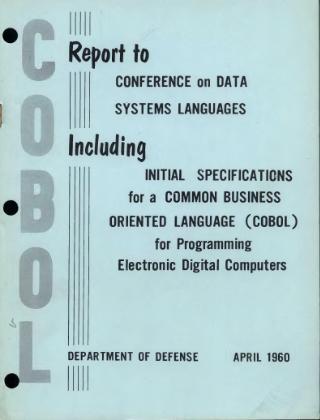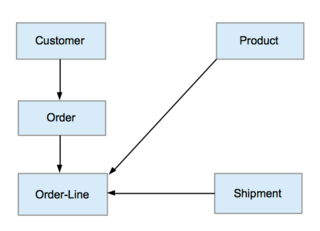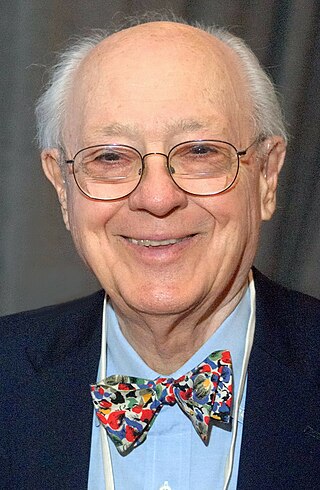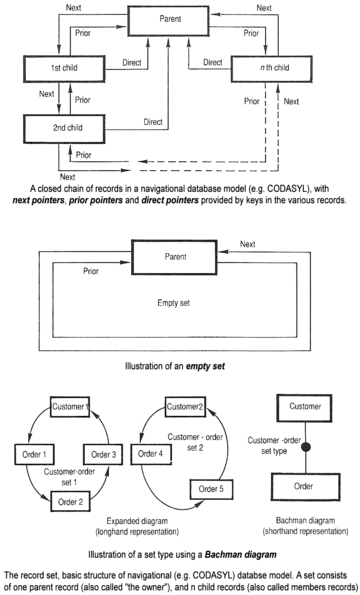
The American National Standards Institute is a private nonprofit organization that oversees the development of voluntary consensus standards for products, services, processes, systems, and personnel in the United States. The organization also coordinates U.S. standards with international standards so that American products can be used worldwide.
ANSI C, ISO C, and Standard C are successive standards for the C programming language published by the American National Standards Institute (ANSI) and ISO/IEC JTC 1/SC 22/WG 14 of the International Organization for Standardization (ISO) and the International Electrotechnical Commission (IEC). Historically, the names referred specifically to the original and best-supported version of the standard. Software developers writing in C are encouraged to conform to the standards, as doing so helps portability between compilers.

COBOL is a compiled English-like computer programming language designed for business use. It is an imperative, procedural, and, since 2002, object-oriented language. COBOL is primarily used in business, finance, and administrative systems for companies and governments. COBOL is still widely used in applications deployed on mainframe computers, such as large-scale batch and transaction processing jobs. Many large financial institutions were developing new systems in the language as late as 2006, but most programming in COBOL today is purely to maintain existing applications. Programs are being moved to new platforms, rewritten in modern languages, or replaced with other software.

In computing, a database is an organized collection of data or a type of data store based on the use of a database management system (DBMS), the software that interacts with end users, applications, and the database itself to capture and analyze the data. The DBMS additionally encompasses the core facilities provided to administer the database. The sum total of the database, the DBMS and the associated applications can be referred to as a database system. Often the term "database" is also used loosely to refer to any of the DBMS, the database system or an application associated with the database.
Structured Query Language (SQL) is a domain-specific language used to manage data, especially in a relational database management system (RDBMS). It is particularly useful in handling structured data, i.e., data incorporating relations among entities and variables.
The Call Level Interface (CLI) is an application programming interface (API) and software standard to embed Structured Query Language (SQL) code in a host program as defined in a joint standard by the International Organization for Standardization (ISO) and International Electrotechnical Commission (IEC): ISO/IEC 9075-3:2003. The Call Level Interface defines how a program should send SQL queries to the database management system (DBMS) and how the returned recordsets should be handled by the application in a consistent way. Developed in the early 1990s, the API was defined only for the programming languages C and COBOL.

In computing, the network model is a database model conceived as a flexible way of representing objects and their relationships. Its distinguishing feature is that the schema, viewed as a graph in which object types are nodes and relationship types are arcs, is not restricted to being a hierarchy or lattice.

Charles William Bachman III was an American computer scientist, who spent his entire career as an industrial researcher, developer, and manager rather than in academia. He was particularly known for his work in the early development of database management systems. His techniques of layered architecture include his namesake Bachman diagrams.

In the context of SQL, data definition or data description language (DDL) is a syntax for creating and modifying database objects such as tables, indices, and users. DDL statements are similar to a computer programming language for defining data structures, especially database schemas. Common examples of DDL statements include CREATE, ALTER, and DROP. If you see a .ddl file, that means the file contains a statement to create a table. Oracle SQL Developer contains the ability to export from an ERD generated with Data Modeler to either a .sql file or a .ddl file.

A data dictionary, or metadata repository, as defined in the IBM Dictionary of Computing, is a "centralized repository of information about data such as meaning, relationships to other data, origin, usage, and format". Oracle defines it as a collection of tables with metadata. The term can have one of several closely related meanings pertaining to databases and database management systems (DBMS):
A data manipulation language (DML) is a computer programming language used for adding (inserting), deleting, and modifying (updating) data in a database. A DML is often a sublanguage of a broader database language such as SQL, with the DML comprising some of the operators in the language. Read-only selecting of data is sometimes distinguished as being part of a separate data query language (DQL), but it is closely related and sometimes also considered a component of a DML; some operators may perform both selecting (reading) and writing.
A data control language (DCL) is a syntax similar to a computer programming language used to control access to data stored in a database (authorization). In particular, it is a component of Structured Query Language (SQL). Data Control Language is one of the logical group in SQL Commands. SQL is the standard language for relational database management systems. SQL statements are used to perform tasks such as insert data to a database, delete or update data in a database, or retrieve data from a database.
ISO 10303 is an ISO standard for the computer-interpretable representation and exchange of product manufacturing information. It is an ASCII-based format. Its official title is: Automation systems and integration — Product data representation and exchange. It is known informally as "STEP", which stands for "Standard for the Exchange of Product model data". ISO 10303 can represent 3D objects in Computer-aided design (CAD) and related information.
The InterNational Committee for Information Technology Standards (INCITS),, is an ANSI-accredited standards development organization composed of Information technology developers. It was formerly known as the X3 and NCITS.
The European Committee for Standardization (CEN) Standard Architecture for Healthcare Information Systems, Health Informatics Service Architecture or HISA is a standard that provides guidance on the development of modular open information technology (IT) systems in the healthcare sector. Broadly, architecture standards outline frameworks which can be used in the development of consistent, coherent applications, databases and workstations. This is done through the definition of hardware and software construction requirements and outlining of protocols for communications. The HISA standard provides a formal standard for a service-oriented architecture (SOA), specific for the requirements of health services, based on the principles of Open Distributed Processing. The HISA standard evolved from previous work on healthcare information systems architecture commenced by Reseau d’Information et de Communication Hospitalier Europeen (RICHE) in 1989, and subsequently built upon by a number of organizations across Europe.
ISO/IEC JTC 1, entitled "Information technology", is a joint technical committee (JTC) of the International Organization for Standardization (ISO) and the International Electrotechnical Commission (IEC). Its purpose is to develop, maintain and promote standards in the fields of information and communications technology (ICT).
ISO/IEC JTC 1/SC 22 Programming languages, their environments and system software interfaces is a standardization subcommittee of the Joint Technical Committee ISO/IEC JTC 1 of the International Organization for Standardization (ISO) and the International Electrotechnical Commission (IEC) that develops and facilitates standards within the fields of programming languages, their environments and system software interfaces. ISO/IEC JTC 1/SC 22 is also sometimes referred to as the "portability subcommittee". The international secretariat of ISO/IEC JTC 1/SC 22 is the American National Standards Institute (ANSI), located in the United States.
The Data Base Task Group (DBTG) was a working group founded in 1965 by the Cobol Committee, formerly Programming Language Committee, of the Conference of Data Systems Language (CODASYL). It was initially named the List Processing Task Force and later renamed to DBTG in 1967. The DBTG was chaired by William Olle of RCA.
Health Level Seven International (HL7) is a non-profit ANSI-accredited standards development organization that develops standards that provide for global health data interoperability.
GQL is a standard graph query language published by ISO in April 2024.







